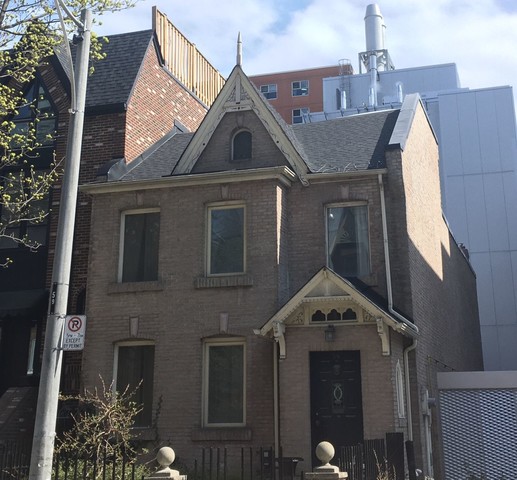
Verna Johnston Author Boarding House
Discovering the need for a community
59 McGill St., Former Ryerson student residence and Verna Johnston’s boarding house from 1972-1973. Heritage Toronto.
Verna Johnston’s indigenous youth boarding house from 1966-1972, 129 Blythwood Ave.
Discovering the need for a community
Verna Johnston was an Ojibwe woman from Neyaashiinigmiing reserve (Ontario) who started a boarding house for Indigenous youth in Toronto, having experienced herself the isolation of being Indigenous in the city. She had lived on the reserve her whole life until she separated from her alcoholic husband and moved to Toronto to work. She enjoyed independence but also missed being surrounded by her community like she had been on reserve. Eventually she moved back to Neyaashiinigmiing.
Returning to Toronto
In the 1960s, Verna’s granddaughters resolved to move to Toronto for post-secondary education. They had never lived in the city before and Verna remembering her own estrangement went along with them. She made home-cooked meals and they talked through their days every night. Verna created a loving and safe environment so her girls could thrive at school.
From home to boarding house
A cousin of the granddaughters frequently visited and wanted to move in to enjoy the comforting atmosphere Verna had created. One weekend while Verna was away that cousin moved in! Without intending, the house had become a boarding house for Indigenous students. Soon she had up to 10 boarders at a time. She cooked, cleaned, counseled and cared for them all as though they were all her grandchildren. During her time at the McGill Street she also found the time to write “Tales of Nokomis” a retelling of the stories her grandmother told her.
Establishing a community for future generations
Besides running her boarding house and writing a book, she also volunteered at Anduhyaun House, Wigwamen Housing, the YMCA and the Red Cross in order to help Toronto’s Indigenous community. She taught Indigenous women how to make crafts so they could earn their own money and she gave talks across the province on Indigenous culture and history. She helped to create the community that she had needed.

